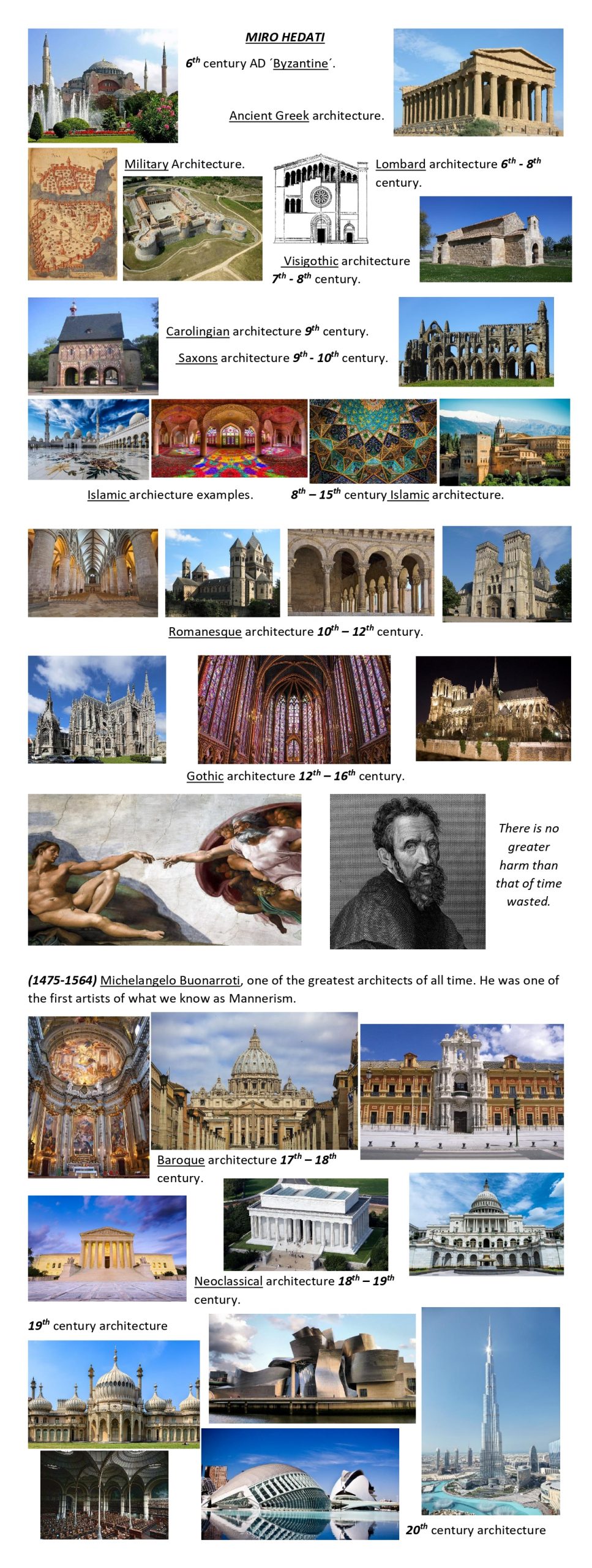(5th century) Since the disintegration of the Roman Empire, both West and East parts were Christianized so the only important architecture were the churches and other religious buildings.
Byzantine architecture was mostly dedicated to religion with an emphasis on the interior of the buildings and giving the exterior a simple design. Many other public buildings were built such as hospitals and orphanages. But the most important pieces of architecture were the imperial palaces, the Magnum Palatio, millitary installations and around thirty churches. The Hagia Sophia was one of the most incredible and difficult piece of architecture to design and build, it represents the union between the empire and the church. They tried to picture heaven on the inside of the Hagia Sophia. The implementation and maintenance of defensive systems, as well as the collection and distribution of water, were of great importance, so military architecture was quite important too.
Preromanesque architecture developed castles too, apart from churches and monasteries. Then from the 6th century until the 10th century different groups of people evolved and were distributed around Europe. Lombars, Visigoths, Carolingian and Saxons, each of them created and designed their own symbols and type of architecture.
Islamic architecture was developed from very special geometrical patterns and shapes. Another common feature was the use of water and the construction of towers, being defensive elements. In the gardens they designed water routes and introduce different aromatic plants. The most traditional pieces of architecture in the Islam are the Mosques, the religious buildings, and the Hammams, for hygienic and religious purposes. Many techniques with ceramics were used.
Romanesque is associated with the art of the Normans. Their architecture and art are loaded with symbolism and lose realism. Religious buildings are books made of stone, characterized by large masses and heavy proportions. Many of the details are taken from the Roman architecture.
Gothic architecture is characterized as a style of masonry building that makes heavy use of cavernous spaces with walls broken up by overlaid tracery and by the invention of the Ogival arch. Cathedrals were very important in this epoque, as it was the house of god which produced fear. Civil buildings increased a lot too due to rise of the commerce and crafts. Most of this was an expression of the new bourgeois social class and its new demands.
Renaissance architecture was rationally understandable, formed by planes and spaces organized according to clear and deciphenarable numerical proportions. This brought back some interest in Romanity, which was combined with a new urban culture. Brunelleschi, Alberti, Palladio and Michelangelo were some of the most important names of these epoque and artistic time.
Baroque was linked to the monarchy, aristocracy and the church, and it had interest in the natural environment. This architecture was about moulded spaces, the manipulation of light, colour and sensual details. The baroque is the spatial liberation of the rules of the treatists, of conventions, of elementary geometry and of everything static that had already begun with the mannerits. Reality and illusion was pretty much mixed, as decorations that rise towards the sky that frames the scenes.
Neoclassic architecture was about the domination of the structural truth over the visual effect was recovered. The neoclassical style was linked to the ideo of public service and educational functions of the buildings. Some french architects reinvented an architecture of pure geometric forms to express the interior function and proposed an architectural revolution being in a way pioneers of modern architecture.
(19th century) Polytechnic schools and international exhibitions are founded, experimenting new shapes and materials. The architecture of industrialization is related to new construction typologies.And new construction materials were provided like cast iron and glass.
(20th century) It is characterized by clean lines, curves and undulating inspired by nature and oriental art. Modernism would become the dominant architectural form in the aftermath of the devastation of the Second World War.
